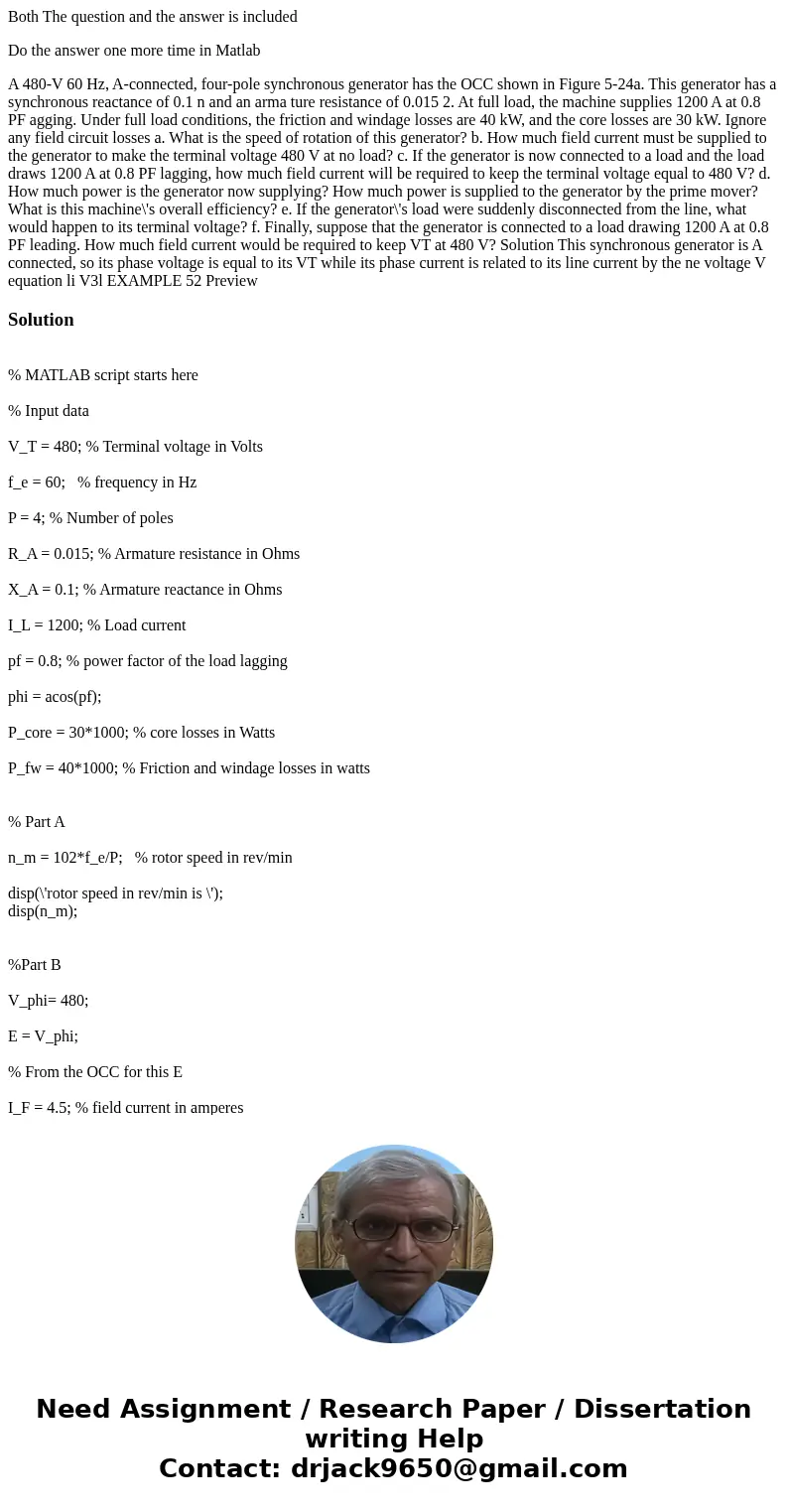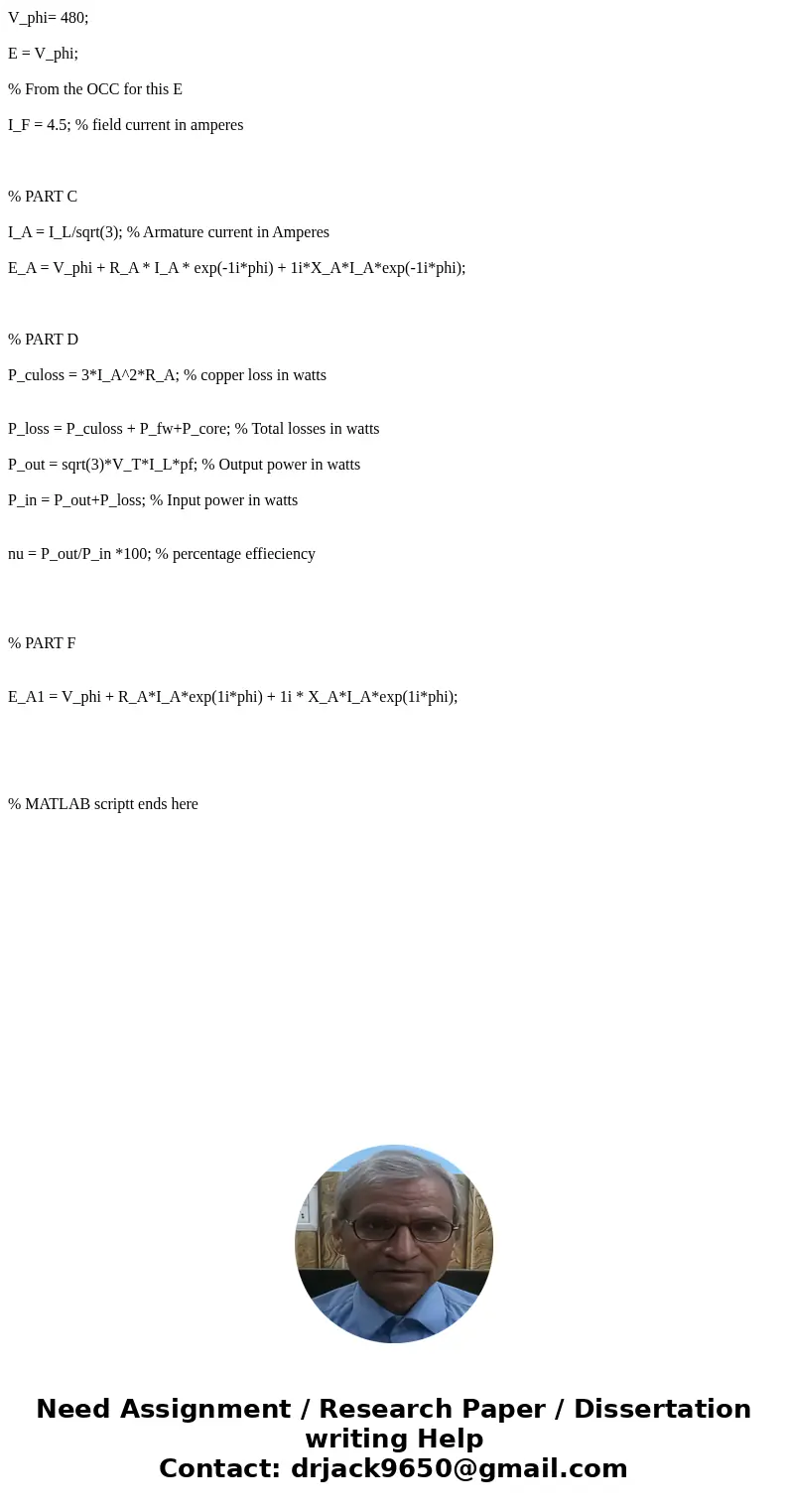Both The question and the answer is included Do the answer o
Both The question and the answer is included
Do the answer one more time in Matlab
A 480-V 60 Hz, A-connected, four-pole synchronous generator has the OCC shown in Figure 5-24a. This generator has a synchronous reactance of 0.1 n and an arma ture resistance of 0.015 2. At full load, the machine supplies 1200 A at 0.8 PF agging. Under full load conditions, the friction and windage losses are 40 kW, and the core losses are 30 kW. Ignore any field circuit losses a. What is the speed of rotation of this generator? b. How much field current must be supplied to the generator to make the terminal voltage 480 V at no load? c. If the generator is now connected to a load and the load draws 1200 A at 0.8 PF lagging, how much field current will be required to keep the terminal voltage equal to 480 V? d. How much power is the generator now supplying? How much power is supplied to the generator by the prime mover? What is this machine\'s overall efficiency? e. If the generator\'s load were suddenly disconnected from the line, what would happen to its terminal voltage? f. Finally, suppose that the generator is connected to a load drawing 1200 A at 0.8 PF leading. How much field current would be required to keep VT at 480 V? Solution This synchronous generator is A connected, so its phase voltage is equal to its VT while its phase current is related to its line current by the ne voltage V equation li V3l EXAMPLE 52 PreviewSolution
% MATLAB script starts here
% Input data
V_T = 480; % Terminal voltage in Volts
f_e = 60; % frequency in Hz
P = 4; % Number of poles
R_A = 0.015; % Armature resistance in Ohms
X_A = 0.1; % Armature reactance in Ohms
I_L = 1200; % Load current
pf = 0.8; % power factor of the load lagging
phi = acos(pf);
P_core = 30*1000; % core losses in Watts
P_fw = 40*1000; % Friction and windage losses in watts
% Part A
n_m = 102*f_e/P; % rotor speed in rev/min
disp(\'rotor speed in rev/min is \');
disp(n_m);
%Part B
V_phi= 480;
E = V_phi;
% From the OCC for this E
I_F = 4.5; % field current in amperes
% PART C
I_A = I_L/sqrt(3); % Armature current in Amperes
E_A = V_phi + R_A * I_A * exp(-1i*phi) + 1i*X_A*I_A*exp(-1i*phi);
% PART D
P_culoss = 3*I_A^2*R_A; % copper loss in watts
P_loss = P_culoss + P_fw+P_core; % Total losses in watts
P_out = sqrt(3)*V_T*I_L*pf; % Output power in watts
P_in = P_out+P_loss; % Input power in watts
nu = P_out/P_in *100; % percentage effieciency
% PART F
E_A1 = V_phi + R_A*I_A*exp(1i*phi) + 1i * X_A*I_A*exp(1i*phi);
% MATLAB scriptt ends here


 Homework Sourse
Homework Sourse